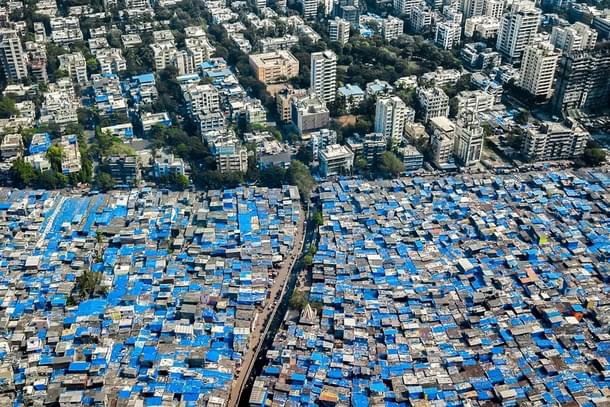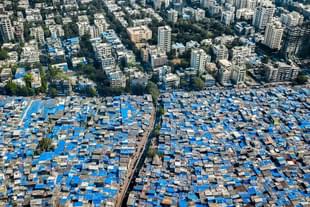News Brief
Mumbai: $3-Billion Dharavi Redevelopment Project Moves Forward
V Bhagya Subhashini
Nov 26, 2024, 01:52 PM | Updated Nov 29, 2024, 03:43 PM IST
Save & read from anywhere!
Bookmark stories for easy access on any device or the Swarajya app.


The BJP-led Mahayuti coalition’s decisive victory in Maharashtra's assembly elections has breathed new life into the $3-billion Dharavi Redevelopment Project, spearheaded by a subsidiary of the Adani Group.
With the opposition Maha Vikas Aghadi, which had pledged to cancel the initiative, suffering a significant electoral setback, the project is now expected to move forward with fewer political hurdles.
The Dharavi Redevelopment Project Pvt Ltd (DRPPL), with an 80 per cent stake owned by the Adani Group and the remaining 20 per cent by the state’s Slum Rehabilitation Authority, aims to transform Dharavi’s sprawling 600-acre slum. Home to over one million residents, Dharavi represents both a challenge and an opportunity for urban renewal.
Securing land remains a critical factor for the project’s success, particularly for rehousing “ineligible” residents—those who settled in Dharavi after 2010.
The Union commerce ministry recently transferred 256 acres of defunct salt pan land to the state, which has been earmarked for rental housing in areas like Wadala, Bhandup, Kanjurmarg, and Vikhroli. An additional 125 acres near the Deonar dumping ground has been allocated for similar purposes.
In tandem, the project has acquired land from Indian Railways for housing eligible residents, with demolition and preparatory works already underway.
The redevelopment plan envisions providing on-site housing for “eligible” residents, offering 350-square-foot homes free of cost for those in tenements built before 1 January 2000.
For residents of tenements built between 2000 and 2011, 300-square-foot homes will be available under the Pradhan Mantri Awas Yojana for a nominal fee of Rs 2.5 lakh. “Ineligible” residents will be relocated to rental housing in “model townships” with options for future ownership.
Surveys to finalise the number of eligible residents and businesses are underway and are expected to conclude by March 2025. By October, assessments of over 15,000 structures had been completed, reports Economic Times.
Transforming Dharavi
Dharavi is one of the most densely populated areas in the world, with over 354,000 people per square kilometre. Despite its overcrowding, Dharavi is a hub of economic activity, with thriving informal industries such as leather, pottery, and recycling providing employment to over 100,000 individuals.
The state government envisions transforming Dharavi into a modern urban cluster with high-rise residential structures, industrial zones, and commercial hubs equipped with enhanced infrastructure. The project aims to integrate Dharavi's residents into the broader city fabric, reducing socio-economic differentiation.
Dharavi’s unique cultural diversity, with over 85 communities residing within its boundaries, adds to its significance. The redevelopment plan seeks to preserve this cultural mosaic while creating a more livable environment and fostering economic growth.
If successful, the Dharavi Redevelopment Project could serve as a model for large-scale urban renewal in India, balancing modernisation with inclusivity.
V Bhagya Subhashini is a staff writer at Swarajya. She tracks infrastructure developments.




